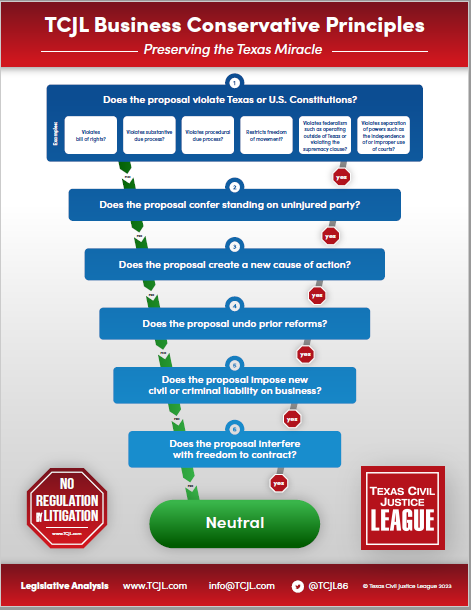 In a case of great interest to lenders, the Texas Supreme Court responded to a certified question from the U.S. Fifth Circuit Court of Appeals regarding the application of Texas’ four-year statute of limitations to real property liens under § 16.035, CPRC.
In a case of great interest to lenders, the Texas Supreme Court responded to a certified question from the U.S. Fifth Circuit Court of Appeals regarding the application of Texas’ four-year statute of limitations to real property liens under § 16.035, CPRC.
Linda Moore; Thomas Moore, Jr. v. Wells Fargo Bank, National Association, as trustee for MASTR Asset Backed Securities Trust 2004-OPT2, Mortgage Pass-Through Certificates; PHH Mortgage Corporation (No. 23-0525) involves a dispute between a mortgage lienholder and homebuyers who repeatedly fell behind on their payments despite two separate loan modification agreements designed to assist them. The loan servicer finally sent a notice of default in October 2015, which requested a delinquent amount and expressed the lienholder’s intent to accelerate the loan. A few months later, in February 2016, the lienholder (Wells Fargo) sent the buyers a notice of acceleration, which the parties agree triggered the running of the four-year statute of limitations to foreclose under § 16.035. Subsequently, the lienholder followed up with additional notices in October and November of 2017, January and March of 2017, and March 2019. Each of the subsequent notices contained language rescinding the prior notices but at the same time re-accelerated the maturity date of the loan.
In August 2020, the buyers filed a declaratory judgment action in state court asserting that the four-year limitations period had expired and the lienholder could no longer foreclose on the property. Wells Fargo removed the case to federal court and moved for summary judgment, which the district court granted on the basis that the lienholder rescinded all acceleration notices pursuant to § 16.038, thus resetting the four-year clock. The buyers appealed to the Fifth Circuit.
The Fifth Circuit determined that the case raised two unresolved issues of “pure law” that required review by SCOTX. Under § 16.038, a lienholder may rescind a prior acceleration by sending a written notice by certified mail to the debtor’s last known address. Rescinding a prior acceleration has no effect on the lienholder’s right to accelerate the maturity date of the loan in the future. Wells Fargo asserts that it met the statutory requirement for rescission in each notice, while the debtors contend that the statute doesn’t apply because the lienholder “impermissibly attempted to simultaneously rescind the acceleration and re-accelerate the loan.”
The Fifth Circuit noted that a recent Texas intermediate appellate decision, PHH Mortgage Corp. v. Aston, No. 01-21-00057-CV, 2022 WL 3363196 (Tex. App.—Houston [1st Dist] Aug. 16, 2022, pet. denied), came down on the lienholder’s side of the argument, allowing simultaneous rescission and re-acceleration. But it also pointed to the Fifth Circuit’s own precedent in Wilmington Trust v. Rob, 891 F.3d 174, 177 (5th Circ. 2018), which held that a simultaneous rescission and re-acceleration could not operate to re-accelerate the loan because Texas law requires a prior notice of intent to accelerate. Given the confusion, the Fifth Circuit certified the following questions: “(1) May a lender simultaneously rescind a prior acceleration and re-accelerate a loan under [§ 16.038]?” and “(2) If a lender cannot simultaneously rescind a prior acceleration and re-accelerate a loan, does such an attempt void only the re-acceleration, or both the re-acceleration and the rescission?”
In an opinion by Justice Bland, SCOTX sided with the lender. Observing that § 16.038(b) provides that a lender may rescind acceleration of a note by giving written notice to the debtor served “by first class or certified mail and [] complete when the notice is deposited in the United States mail, postage prepaid and addressed to the debtor at the debtor’s last known address.” Rescinding acceleration by this method further “does not affect a lienholder’s right to accelerate the maturity date of the debt in the future nor does it waive past defaults.” Here the lenders argued that the notices they mailed to the debtors simultaneously rescinding acceleration and re-accelerating the loan complied with the statute. The Court agreed, concluding that the statute does not require separate notices nor otherwise restrict a lender from reaccelerating the loan at the same time it rescinds a prior acceleration. The four-year statute of limitations thus resets with the new notice of acceleration, as determined by the federal district court.
As we observed when we first reported on this case last year, we thought it a harsh and unjust result should the lender have lost its option to foreclose just because it notified the debtor of two distinct actions in a single notice. We are happy to see that SCOTX heartily concurred.












